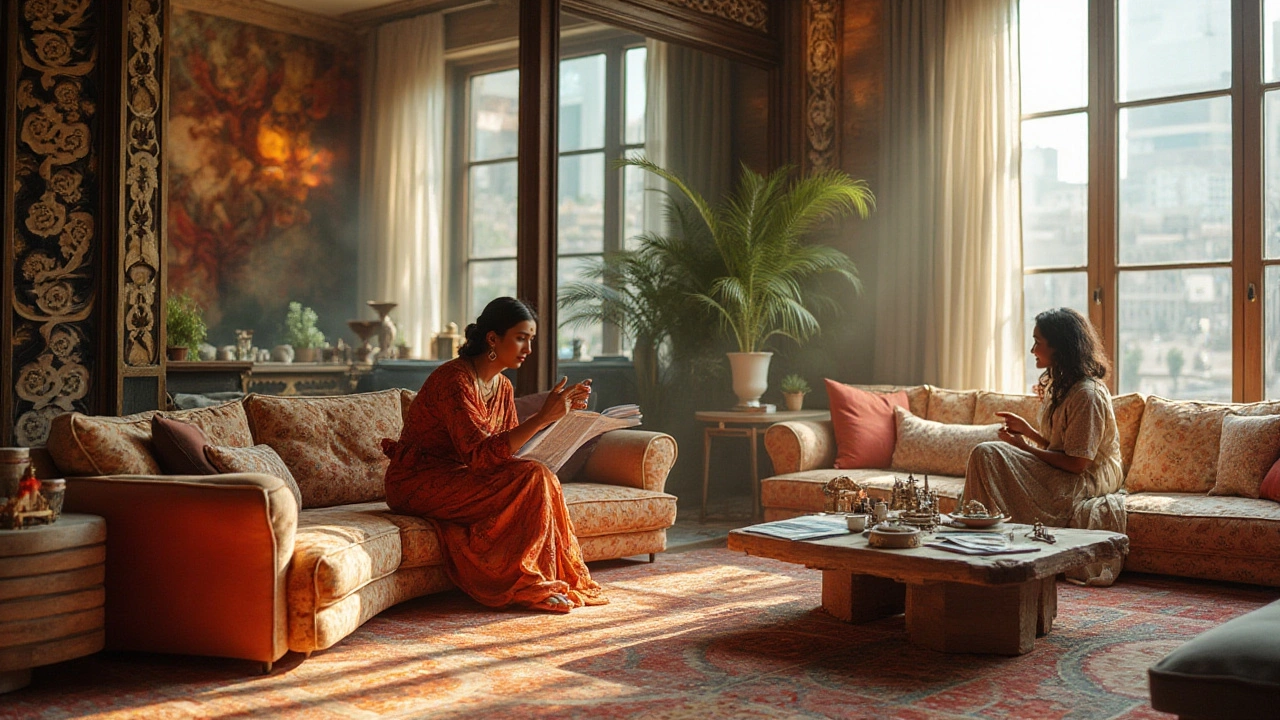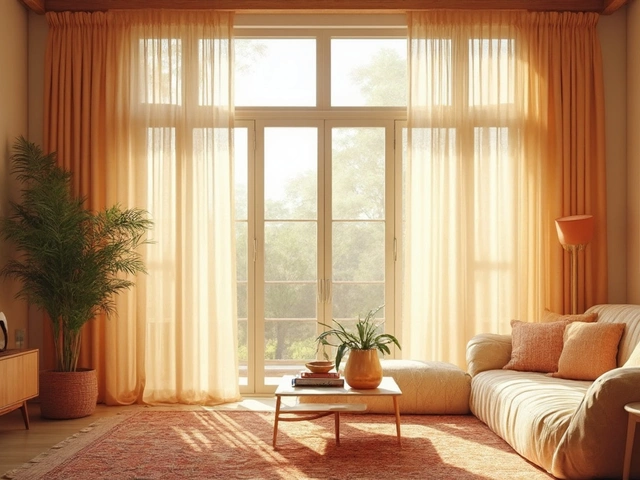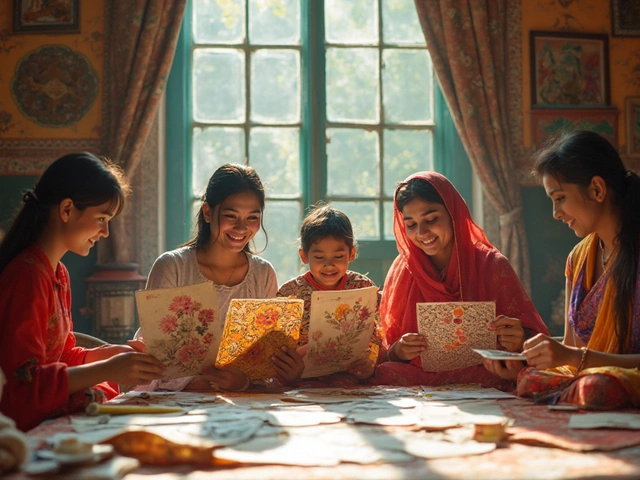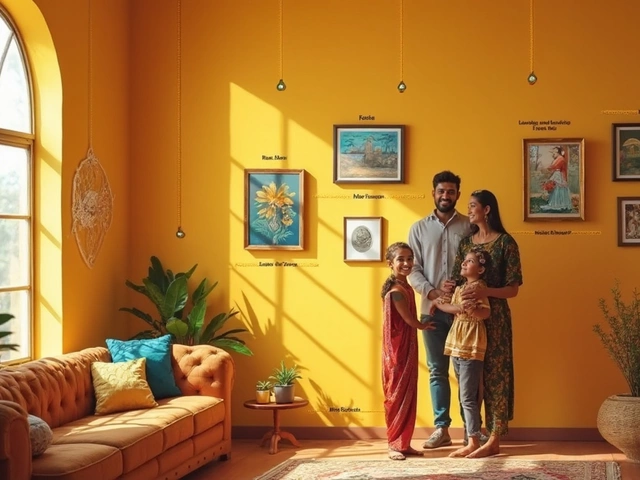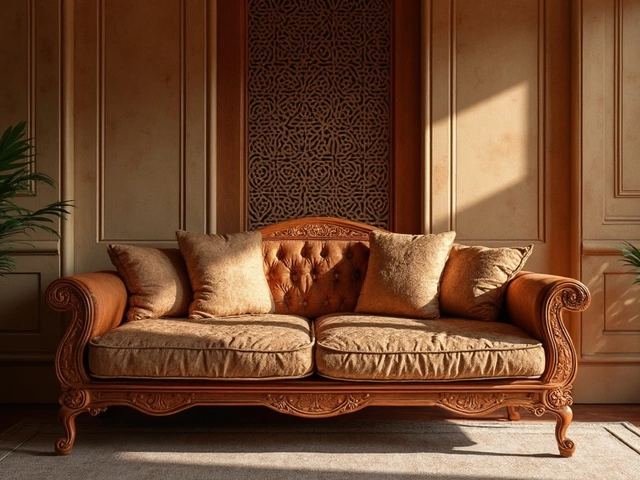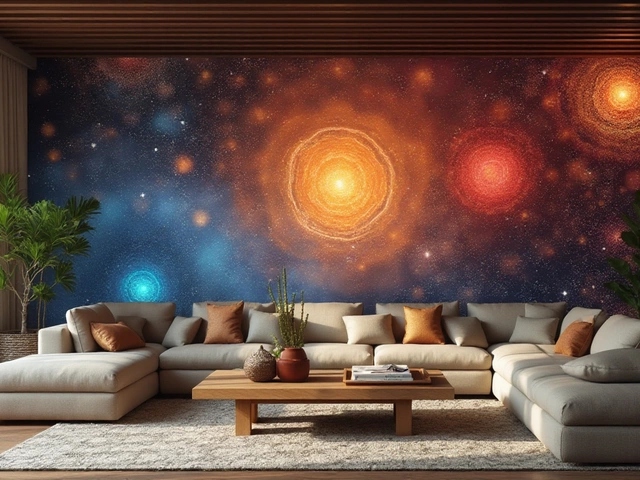Crafting a beautiful home or office space isn't just about picking the right colors or furniture. It's about capturing personality, functionality, and aesthetic value in every square foot. Interior designers are the maestros behind this magic, translating your vision into reality. But before diving into a decorating adventure, it's wise to know how much it might cost, particularly per hour.
While there are no strict rules, several factors influence what designers charge. Their experience, where they work, and the complexity of the project all play a role. In this article, we'll explore these elements to help you plan your budget effectively, ensure alignment on costs, and ultimately enjoy seamless collaboration with your designer.
- Factors Influencing Hourly Rates
- Average Pricing by Region
- Comparative Costs: Solo Designers vs. Design Firms
- Setting a Budget for Your Project
- Practical Tips to Manage Design Costs
- Maximizing Value from Interior Design Services
Factors Influencing Hourly Rates
Diving into the world of interior design costs requires an understanding of what shapes the hourly rates of designers. One might liken it to unwinding a complex ball of yarn, where every loop and twist holds a clue. At a fundamental level, it's the designer's experience that often dictates their price. A seasoned designer with years of award-winning projects commands a different fee than someone fresh from college. Experience not only embodies the number of projects completed but also the adeptness at handling various challenges. Intricate designs, dealing with high-end materials, or navigating the tricky waters of severely constrained spaces are all elements a well-versed designer might charge a premium for.
Location also plays a pivotal role. Just like any profession, geographical variance can result in substantial differences in pricing. Designers in metropolitan hubs like New York City or Los Angeles often have higher fees than those practicing in a cozy midwestern town. This isn't solely about lifestyle costs; it's the varied demand and competition dictating the market. A designer's location impacts access to resources, suppliers, and a network of artisans—all contributing to their ability to take on complex work.
Sometimes, the type of project itself can adjust the financial expectations. Whether updating a single room or rearranging a sprawling estate, the scope of work—and thus the hours required—dictate the final design costs. The size and complexity of a project will substantially determine how intense and lengthy the process might be. Designers may charge differently for consulting services compared to comprehensive design-build endeavors. Consider the materials and finishes requested by the client, as higher-end projects often require greater precision and, therefore, more time.
To endorse this perspective, let's turn to a recent industry seminar where Anne Smith, a well-regarded figure in interior design, remarked:
"Design is an art that reflects culture and personal taste, and each brushstroke of planning comes with its value. Pricing isn't just about the hours spent, but the vision and expertise brought to the table."Understanding these elements allows clients to appropriately benchmark discussions with potential designers.
Moreover, the brand and reputation of the designer can also influence rates. A designer who has built a strong brand with a portfolio featured in international design magazines and shows might charge more than an equally skilled counterpart who prefers the quiet elegance of anonymity. This is because a recognized brand often assures quality, attracting specific clientele willing to pay for the perceived value. On a practical end, the logistical aspects like demand amid seasonal rushes, say around the holidays or major cultural events, may lead to price variations. If a designer is booking into the next season, they might adjust their rates accordingly.
Average Pricing by Region
When diving into the world of interior design costs, one of the most telling factors is the geographical region in which you are seeking services. The cost of living, economic conditions, and local demand for interior design services can create significant differences in pricing across various regions. For instance, designers in metropolitan areas such as New York City or San Francisco tend to charge considerably more compared to those based in smaller cities or rural areas. This is largely due to the higher operational costs and living expenses faced by professionals in bustling urban locales.
In the U.S., average hourly rates for interior designers can range from $50 to $500. In states where the design industry is highly competitive, such as California, you might find that prices gravitate towards the upper end of this spectrum. Designers in cities like Los Angeles often command high fees, not only because of the affluent clientele but also due to the caliber and prestige associated with top-tier design work. On the other hand, regions like the Midwest might offer more budget-friendly rates, where an hourly charge typically falls between $75 and $150.
A survey of interior design professionals reveals that, on average, designers in the Northeast charge 20% more than their Southern counterparts. This discrepancy is attributed to the difference in cultural valuation of design aesthetics, along with varying business expenses and client expectations. In high-end markets, hiring a designer from a renowned firm could amount to hiring an expert whose services are exclusive and personalized, often justifying the raised price point.
"Hiring an interior designer in a high-demand area might cost more, but it's important to remember that their experience in handling premium projects is invaluable," says Robin Weathers, a renowned design expert.
Even as you move across the Atlantic to Europe, pricing structures vary quite distinctly. A London-based designer, for instance, might start at £150 per hour, with certain elites charging upwards of £500, particularly renowned for their work with high-profile clients. Comparatively, in southern locations like Portugal, rates tend to be more moderate, starting at around €50 per hour. This variation highlights not just the impact of local economies but also the cultural emphasis placed on interior aesthetics.
Comparing these insights allows potential clients to gauge what they should expect when hiring designers in different territories, ensuring they align their aspirations with their actual budgetary capabilities. It's crucial, therefore, for homeowners and businesses alike to consider regional cost frameworks when exploring interior design options. Whether you're planning a lavish transformation or a modest makeover, understanding regional pricing helps you navigate the landscape of designer fees more strategically.

Comparative Costs: Solo Designers vs. Design Firms
Navigating the landscape of interior design costs can be perplexing, especially when deciding between hiring a solo designer or a design firm. Each offers unique benefits and potential drawbacks, largely hinging on their pricing structures. To begin with, solo designers are often more flexible when it comes to cost, as they typically operate with lower overhead than larger firms. This can translate into more personalized service and sometimes a more intimate creative partnership. On average, solo designers may charge anywhere from $50 to $200 per hour, depending on their expertise and the region in which they operate. However, this range is not set in stone and can fluctuate significantly based on project requirements.
Design firms, on the other hand, usually bring a broader set of resources and services to the table. Their hourly rates may start higher, generally between $75 and $400 per hour. This jump in pricing often reflects the collective experience and polished process a firm can offer. When opting for a design firm, one can expect a team dynamic, with specialists handling different aspects of a project, from architecture to lighting design, thus contributing to streamlined execution and a more holistic approach to interior design.
Interestingly, a firm's size can influence pricing structures as well. A boutique firm might compete closely with solo designers on rates, while larger, more prestigious establishments could command premium prices for their brand's assurances and expansive capabilities. According to a trend analysis by the American Society of Interior Designers (ASID), the highest rates are often found in urban centers where demand for interior design services peaks due to the rapid real estate growth and a population willing to spend more on home aesthetics.
"Choosing between a solo designer and a firm should align with your budgetary constraints, the scope of your project, and the level of attention you wish to receive," notes renowned design consultant Mark Donovan.
Ultimately, whether you opt for a solo designer or a firm, it's essential to clearly define your project's scope and be transparent with your budget from the outset. This prevents any misalignments in expectations and helps in negotiating a suitable financial agreement. Both options have the potential to deliver spectacular results, making it vital to consider what aligns best with your personal needs and desired outcomes. When planning your perfect space, remember that the right interior design partner will not only enhance your environment but also ensure that the journey to achieving it is as seamless and enjoyable as possible.
Setting a Budget for Your Project
Crafting a financial plan for your interior design venture is akin to mapping a route for a journey—it helps ensure you reach your ultimate destination without detours or unpleasant surprises. Establishing a realistic budget starts with knowing your ultimate goal and prioritizing the elements that matter most to you, whether it's a complete home transformation or updating a single room. Successful projects marry creativity with financial discipline, allowing you to explore possibilities without losing focus on expenditures.
Having a candid conversation with your designer about budget constraints can open doors to creative solutions that align with your aesthetic vision and financial capacity. Many seasoned designers offer tiered pricing structures to accommodate different needs. For instance, someone working in New York might charge higher rates compared to a designer in a smaller city, largely due to cost-of-living differences. According to a survey by The American Society of Interior Designers, average interior design costs can range from $50 to over $200 per hour depending on these factors, underscoring the importance of regional considerations.
As Janelle Briggs, a celebrated designer, once mentioned in an interview, "A well-defined budget challenges creativity. It compels us to find beautiful solutions and materials that are unique, sustainable, and financially smart."
Breaking down your budget into categories like lighting, furniture, and decor items can help manage spending effectively. This approach simplifies tracking expenses and highlights where potential savings can be made. For those embarking on a large-scale project, consider allocating a contingency fund—typically 5-10% of the total budget—to cover unexpected costs or design opportunities that may arise during the project.
Ultimately, setting a budget reflects your investment in turning a space into a personal haven. Use it not as a constraint, but as a structured guide allowing room for the unexpected. With a thoughtful financial blueprint, you can engage productively with your designer, ensuring that every penny is spent intentionally and creatively towards crafting a space that resonates with you.
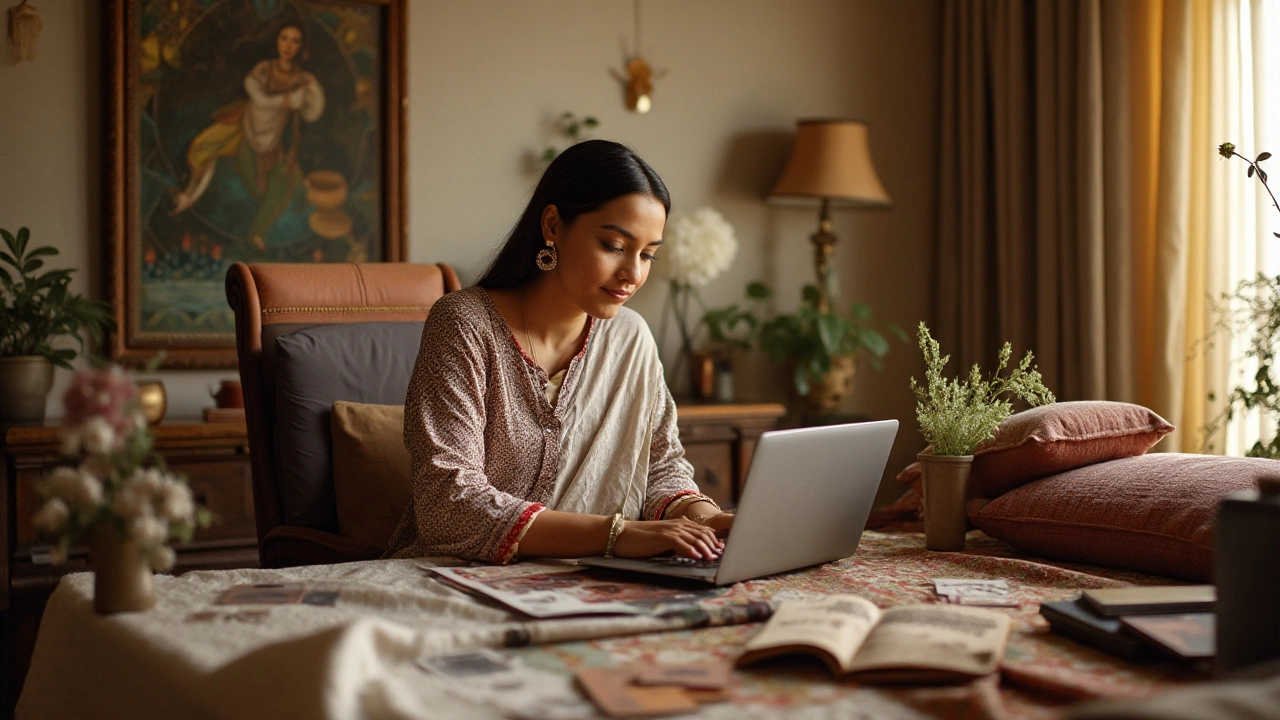
Practical Tips to Manage Design Costs
Interior design costs can spiral quickly if not carefully managed, making it crucial for homeowners to adopt smart strategies in staying within budget. One important approach is to have a clear understanding of your priorities. Know the elements that are non-negotiable and which ones can be flexible. By distinguishing your must-haves from your nice-to-haves, you can better allocate resources to the aspects of the project that matter most.
Another effective tactic is to consider hiring a solo designer instead of a larger firm, especially for smaller projects. Solo designers often have lower overhead costs and can offer more competitive hourly rates. When discussing fees, don't shy away from negotiating. Sometimes designers are open to discussing flexible payment options, especially if you plan to have an ongoing relationship or a large project.
Engaging in open and honest communication with your designer from the get-go helps prevent unexpected expenses. Clarify every detail of your contract and ask questions about potential additional costs. It might be wise to agree on a maximum budget for the entire project, which your designer will respect. Besides, breaking the project into stages can aid in better cost control rather than overwhelming expenses all at once.
Make the Most of What You Have
Often, clients overlook the potential in their own surroundings. By reimagining and repurposing what is already available, significant savings can be realized. A piece of vintage furniture or an art piece can be refreshed instead of replaced. Consult with your designer on how existing items can be creatively incorporated into the new design, allowing room in the budget for more unique purchases.Another tip is to take advantage of sales and clearances. This requires patience and timing but can lead to substantial savings. Designers often have access to trade discounts, which they can pass on to you. Discuss this with your designer to see how these savings can be integrated into your project budget.
Plan for Hidden Costs
Often overlooked in budgeting are the seemingly minor expenses that can add up. Shipping fees, taxes, and even small decor items can impact your final costs. A detailed budget outline can help you track and adjust where necessary. It's also a good practice to keep a contingency fund, around 10% of your project's estimated cost, to handle any surprises."A well-managed budget doesn't just save money; it empowers a design to be more creative," suggests Jayne Michaels of the renowned 2Michaels in New York.By thoughtfully planning each step and making informed decisions, you can manage your design costs effectively and ensure the project aligns with your financial expectations, all while creating a space tailored to your taste.
Maximizing Value from Interior Design Services
Engaging an interior designer is a significant investment, and making the most of their expertise can be the difference between success and disappointment. One primary step is clear communication. Make sure your designer knows your vision—not just the colors you like, but how you want the space to feel. This isn’t merely a visual dialogue; it’s about lifestyle and functionality too. When both parties are on the same page, you’re more likely to achieve a space that looks and feels right for you. Remember, effective communication builds trust and ensures your preferences are respected throughout the process.
Timing also plays a crucial role in maximizing value. Start discussing your project well ahead of when you need it completed. Designers often work on multiple projects at once, and a rushed timeline could lead to overlooked details or increased labor costs. Another cost-savvy tip is to prioritize your needs. Identify which areas are non-negotiable and which are nice-to-haves. This can help in managing resources without compromising on the most essential elements of your design. By tackling key areas first, you can gradually refine the rest when time and budget allow.
From a practical standpoint, being open to suggestions from your designer can add unexpected value. Designers bring a wealth of knowledge from previous projects and can introduce ideas or pieces you might not have considered. Don't be afraid to discuss alternate materials or sourcing options that can help keep the budget in check without sacrificing style. Sometimes, designers have access to trade-only resources or discounts that can be financially beneficial; leverage these opportunities whenever possible.
"An excellent designer knows where to splurge and where to economize, creating spaces that don’t just appear expensive but are intelligently resourceful," notes Sarah Richardson, a respected figure in the interior design industry.
Despite the desire for a fully bespoke service, consider the hybrid approach that mixes professional guidance with your own efforts. You can handle routine tasks like painting or accessorizing, leaving the strategic aspects to the professionals. Moreover, some designers offer consultation packages rather than full project management, which can be more economical. Finally, maintain a balance between function and fashion; remember that trendiness is transient, but a well-curated space is timeless.
Tracking expenses against the project's original scope and objectives can also prevent budget overruns. Hold regular meetings to discuss what's working and what might need adjusting. This not only keeps everyone aligned but can nip potential misunderstandings in the bud. Armed with this proactive approach, maximizing value becomes a shared goal rather than an individual endeavor, making your partnership with an interior designer mutually rewarding and exceptionally fruitful.
